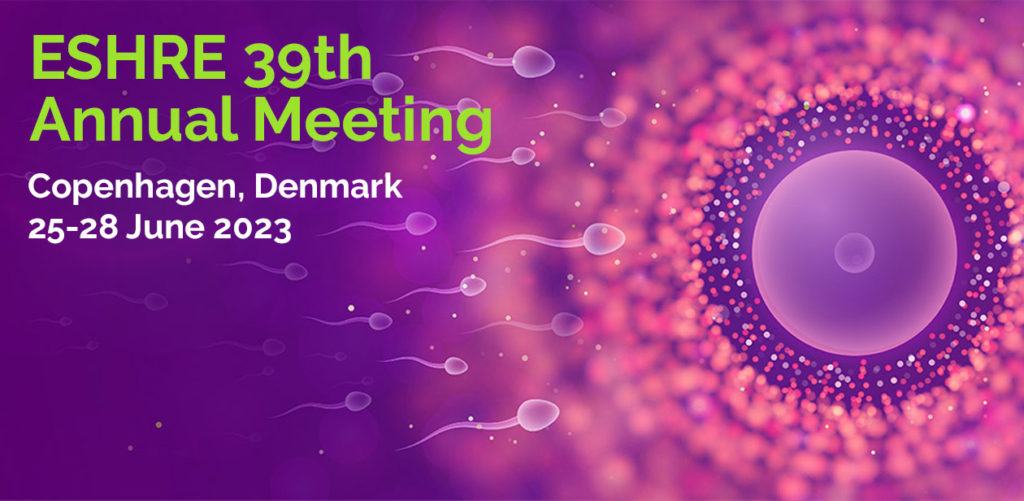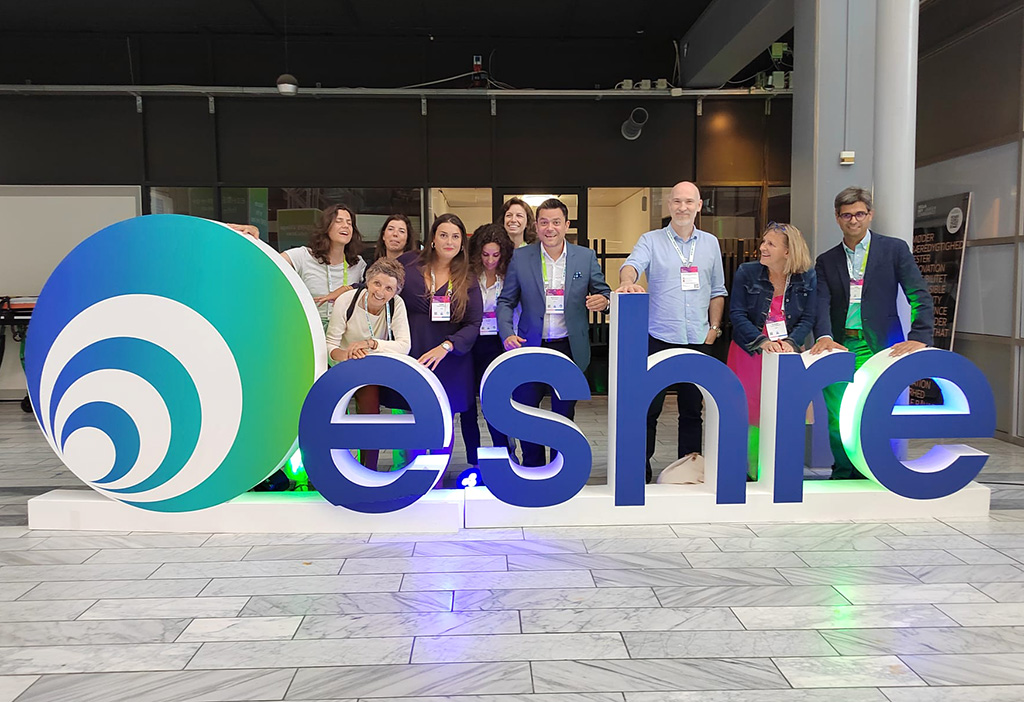
Barcelona, 20 June 2023.- As in every edition, the team of the Dexeus Mujer’s, Reproduction Service, Department of Obstetrics, Gynaecology and Reproduction of Dexeus University Hospital, is actively participating in the 39th Congress of the European Society of Human Reproduction and Embriology (ESHRE), which is being held this month, from 25-28 June in Copenhagen.

This year we are presenting the results of two pioneering randomised clinical trials: TRANSPORT and DUO STIM-FRESH, focused on patients with a low response to ovarian stimulation treatments in order to improve their reproductive outcomes in IVF/ICSI:
● The T-TRANSPORT. Transdermal testosterone treatment for poor ovarian responders
This is the first multicentre, multinational, Europe-wide study to address the efficacy of androgen use in infertile women, a topic that has been under study for more than 20 years. The trial started in 2015 and is currently in phase III. It involves 10 centres in 4 European countries (Belgium, Switzerland, Denmark and Spain). It was conducted on a sample of 300 patients.
● DUO STIM-FRESH. Double vs. single stimulation in young poor prognosis patients followed by a fresh embryo transfer
This trial investigates the results of an innovative ovarian stimulation strategy (in the follicular and luteal phase), in the same cycle, in young patients (<40 years) with a poor prognosis, who undergo a fresh embryo transfer. The aim is to check whether it can favour the obtaining of a greater number of oocytes in less time. It has been carried out on a sample of 112 patients.
Another oral communication that we present is a large study that analyses the clinical outcomes of reproductive patients with adenomyosis, a chronic pathology that can compromise fertility:
● Clinical outcomes in women with adenomyosis undergoing frozen embryo transfer (FET)
It analyses the reproductive outcomes in 140 women diagnosed with adenomyosis undergoing a first cycle of cryoembryo transfer. The study was carried out on a sample of 3500 patients. This pathology is associated with a higher number of miscarriages and complications during pregnancy.
In addition, our team presents a communication that has been selected for oral discussion and four studies in poster format, which provide answers to questions currently the subject of great interest or debate in clinical practice. Below are the issues they address:
Monday 26 June
Session 22: “New Concepts: Poor Responders”
15:30 – 15:45 Transdermal testosterone prior to ovarian stimulation for in vitro fertilization in women with poor ovarian response. A multicenter multinational double-blind placebo-controlled randomized trial (The T-TRANSPORT). Nikolaos P. Polyzos
16:15 – 16:30 Double vs. single stimulation in young poor prognosis patients followed by a fresh embryo transfer: a randomized controlled trial (DUO STIM). Annalisa Racca
Wednesday 28 June
Session 81: “Management of adenomyosis: current strategies and future perspectives”
10:45 – 11:00 Presence of adenomyosis impairs clinical outcomes in women undergoing frozen embryo transfer. Noémie Sachs Guedj
OVARIAN MATURATION
Considering patients’ weight in 3 different trigger strategies.
Can Body Mass Index (BMI) influence the process of oocyte maturation? Valeria Donno
+ 5000 consecutive cycles
MALE INFERTILITY
The influence of the ejaculatory abstinence period on semen parameters from the fisrt diagnostic sample.
Results from analysis of 14.000 samples. Piotr Sokol
EGG DONATION
“Blame it on my youth”: Is a very young donor’s age associated with different blastocyst usable rate and embryo quality? Elisabet Clua
A retrospective study of 1274 oocyte donor’s and 1738 oocyte recipients cycles
OVARIAN STIMULATION
Embryo ploidy rates following progesterone-primed ovarian stimulation protocols (PPOS) or GnRH antagonist: Is there any difference? Mª del Mar Vidal
A prospective study of 44 women underwent two consecutive ovarian stimulation protocols within a period of 6 months
OOCYTE DONOR PROGRAM COST
Economic impact of antagonist stimulation protocol vs progestin primed stimulation protocol in oocyte donor program: a retrospective study. Josep Gonzalo
DEXEUS CAMPUS
Gran Vía de Carles III 71-75
08028 Barcelona
campus@dexeus.com
(+34) 93 227 47 09
® Copyright 2021-2025 Dexeus Mujer Foundation – Gran Via Carles III 71-75. 08028 Barcelona. Spain
| Cookie | Duration | Description |
|---|---|---|
| cookielawinfo-checkbox-analytics | This cookie is set by the GDPR cookie consent plugin. The cookie is used to store the user's consent for cookies in the "Analytics" category. | |
| cookielawinfo-checkbox-functional | The cookie is set by the GDPR cookie consent to record user consent for cookies in the "Functional" category. | |
| cookielawinfo-checkbox-necessary | This cookie is set by the GDPR cookie consent plugin. Cookies are used to store the user's consent for cookies in the "Necessary" category. | |
| cookielawinfo-checkbox-others | This cookie is used by the GDPR component. It is used to store the user consenting cookies in the "Other" category. | |
| cookielawinfo-checkbox-performance | This cookie is set by the GDPR cookie consent plugin. The cookie is used to store the user's consent for cookies in the "Performance" category. | |
| elementor | ||
| viewed_cookie_policy | The cookie is set by the GDPR cookie consent plugin and is used to store whether or not the user has consented to the use of cookies. It does not store any personal data. |
| Cookie | Duration | Description |
|---|---|---|
| _icl_visitor_lang_js | To allow multi-language functionality for web content. | |
| wpml_browser_redirect_test | Used to verify if cookies are allowed in the browser. |
| Cookie | Duration | Description |
|---|---|---|
| _ga | The _ga cookie, installed by Google Analytics, calculates visitor, session and campaign data and also tracks site usage for the site's analytics report. The cookie stores information anonymously and assigns a randomly generated number to recognize unique visitors. The _ga cookie, installed by Google Analytics, calculates visitor, session and campaign data and also tracks site usage for the site's analytics report. The cookie stores information anonymously and assigns a randomly generated number to recognize unique visitors. | |
| _ga_1WD9MFDMJK | This cookie is installed by Google Analytics. |
| Cookie | Duration | Description |
|---|---|---|
| wp-wpml_current_language | Necessary for the operation of the website in the different languages |